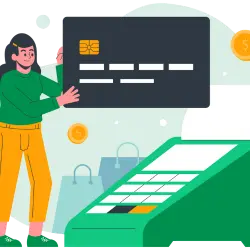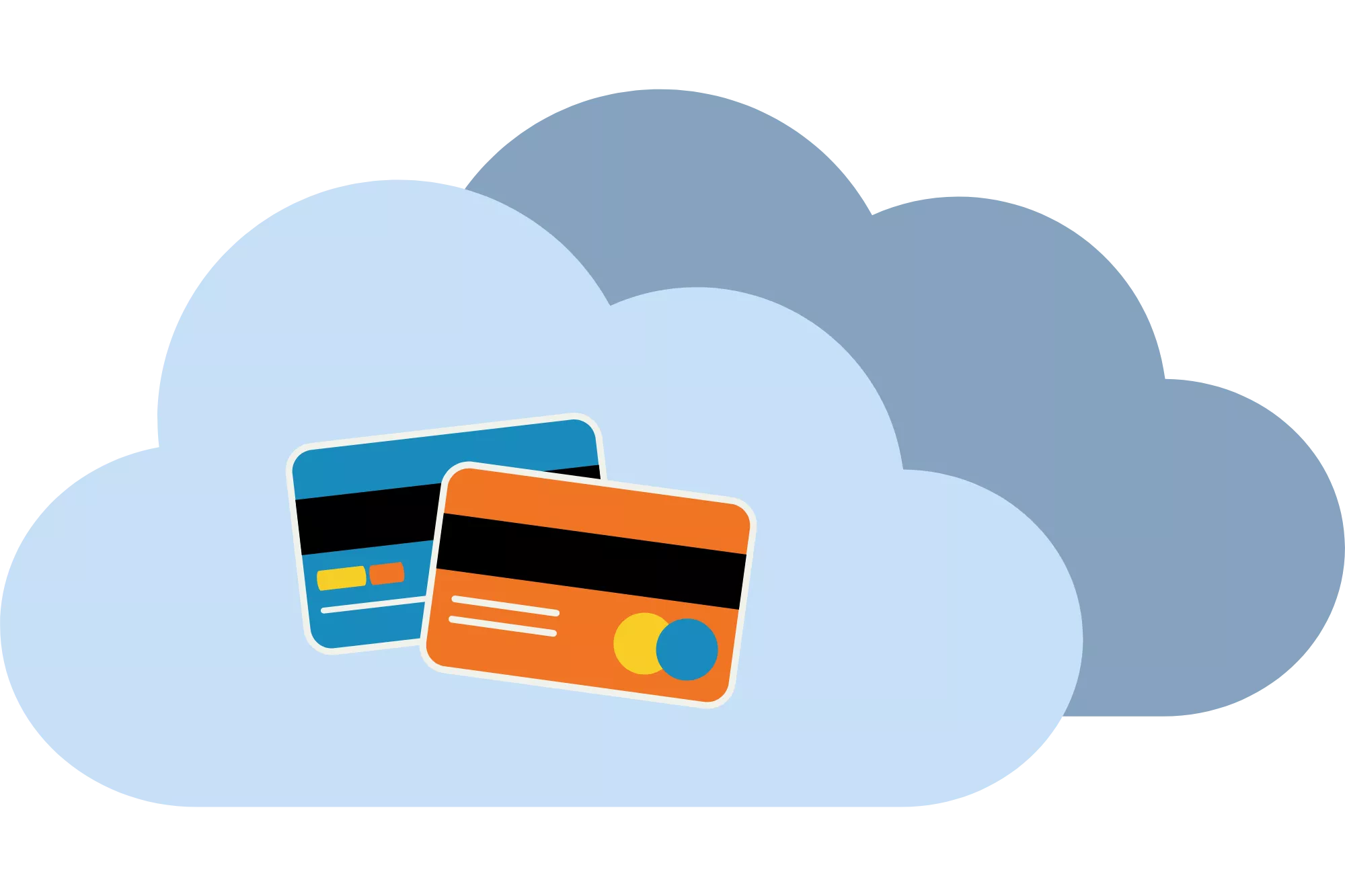TABLE OF CONTENTS
Traditionally, businesses accept payments using a single payment processor or merchant account, but a new process called “payment orchestration” has changed how payments operate. The unique approach utilizes intelligent routing to send a specific transaction to the best possible processor. This ensures that businesses benefit from lower fees, faster payments, and easier navigation. Likewise, payment orchestration allows for multiple payment services to integrate via a single software layer, making it simpler to implement fraud detection services and more without a complex integration process.
With more than 84% of US adults using credit cards, it’s incredibly important for businesses to optimize payment systems to their needs.[1]Forbes Advisor. “Credit Card Statistics and Trends 2023“. Accessed on May 9, 2023. This guide explores payment orchestration, how it works, its benefits, and how it can simplify your payment options. Continue reading to learn more about how payment systems are evolving to provide better value to your business and its customers!
What Is Payment Orchestration?

Payment orchestration is the process of unifying multiple merchant account providers, acquirers, fraud detection services, and payment service providers onto a single software layer. This reduces the complexity associated with each stage of the payment process. In doing so, payment orchestration makes it simpler for merchants to benefit from faster and more affordable payment options without the hassle of integrating with multiple Application Programming Interfaces (API).
By using a unified API system, payment orchestration simplifies every stage of a transaction, including routing, authentication, and settlement. This makes it simpler for merchants to scale their integrated payment systems as their business grows. Additionally, it creates a central reporting hub, allowing merchants to view key data and metrics all in one location rather than logging into multiple accounts.
This advancement in payment infrastructure removes the shackles of partnering with a single merchant account provider or payment service provider (PSP), which in turn improves payment flexibility. Customers can choose between a range of PSPs, and customers in overseas jurisdictions benefit from geo-specific payment options. For example, a merchant may use a different payment processor for international transactions than domestic transactions to ensure they pay the lowest foreign transaction fees.
How Does Payment Orchestration Work?
The payment orchestration process varies depending on the payment provider. However, we’ll take you through a step-by-step process for how most payment orchestration systems operate.
- A customer initiates the checkout process on a business’s website by choosing a payment method. With payment orchestration, the payment options may vary depending on the customer’s location (i.e., a customer checking out from an overseas location may have region-specific payment options).
- A customer inputs their payment details and initiates the transaction process—the payment is automatically routed to the most suitable processor with the most affordable fees.
- If there’s an issue, the payment will be re-routed to the next suitable processor to avoid a declined transaction.
- Once a provider accepts the transaction, payment clearance occurs, and the customer and merchant are notified of the successful payment.
The first four steps listed thus far happen almost instantaneously, ensuring that the checkout process is quick. The last part of the process involves billing and batch processing. It occurs routinely without any manual interference from the merchant, confirming all batches are settled at the appropriate times. Additionally, automated reports are generated so that merchants maintain control over their business’s financial information. Payment orchestration makes accessing all key metrics from a single reporting dashboard easy, improving access to valuable data.
Payment Orchestration vs. Payment Gateway
eCommerce business owners might wonder how payment orchestration differs from a traditional payment gateway. The most important thing to understand is that payment orchestration describes a general process, and a payment gateway is a piece of technology that is used to process transactions.
With payment gateways, a customer inputs their credit card details at checkout, and the gateway then authenticates the information and transmits it to a payment processor. Payment orchestration takes place when multiple acquirers and PSPs connect, providing more options and flexibility to merchants and customers. In doing so, payment orchestrators provide access to lower fees and more efficient payments. So, while gateways and orchestrators offer similar services, one is a specific piece of technology and the other describes the entire payment process from start to finish.
8 Benefits of Using a Payment Orchestration Platform
Implementing payment orchestration into your payment infrastructure can offer numerous benefits. Let’s explore them below:
1. Reduce Processing Costs
Overpaying for processing fees can negatively impact your business’s bottom line. Payment orchestration selects the provider with the best international transaction fees for abroad payments. So if you have an international customer base, don’t underestimate how much money payment orchestration could save your business.
Similarly, integrating with multiple payment service providers can be expensive if you use individual APIs and accounts. With payment orchestration, merchants benefit from lower setup fees and maintenance costs.
2. Implement Smart Payment Routing
Smart payment routing involves sending transactions to the most suitable payment processor, which often varies from customer to customer. Smart routing uses a range of pre-defined rules to determine which provider offers the best pricing and payment speed.
Not only does smart payment routing make it easier to access affordable processing fees, but it also reduces denied transactions. By sending a payment to the most suited payment processor, intelligent payment routing increases the chances of a successful payment. Smart routing can also re-route payments automatically if the initial payment provider rejects them.
3. Analyze, Track, and Report Data
Traditionally, using multiple PSPs and merchant account providers required numerous accounts, making it challenging to track data and metrics. With payment orchestration platforms, all data is in one location to allow merchants to quickly view important metrics. Additionally, payment orchestration enables automated report generation, ensuring merchants receive routine reports on payment processing activity and business performance.
4. Easy Payment Integrations
Integrating with multiple PSPs, acquirers, eCommerce fraud prevention services, and other merchant service providers can be expensive and time-consuming. By using a unified API with payment orchestration, merchants can bypass this obstacle and connect with various providers using a single software layer. This makes it simple to integrate with providers that offer your customers’ favorite features.
5. Improve Customer Experience
Payment orchestration facilitates multiple payment options on a single website. This means customers have more choices when processing payments—improving their overall customer experience. Payment orchestrations not only provide payment flexibility but also facilitate payment re-routing, resulting in fewer rejected transactions. This, in turn, improves the customer experience by making the checkout process hassle-free.
Research suggests that 26% of abandoned carts occur because the checkout process is too long.[2]Shopify. “30+ Shopping Cart Abandonment Statistics and Strategies for Recouping Lost Sales“.Accessed on May 9, 2023. With payment orchestration, combining a range of convenient payment options with instant processing helps avoid shopping cart abandonment.
6. Scale Your Business Faster
Merchants face multiple hurdles when scaling a business, but payment processing shouldn’t be one of them. Payment orchestration allows your business to benefit from the best possible payment options at every stage of growth. Say goodbye to processors that can’t handle your business’s increasing sales volume needs. With payment orchestration, your payment capabilities will automatically adjust as your requirements change.
Not to mention, when you improve your customer’s experience, it can lead to faster growth. As payment orchestration offers localized payment options for customers in foreign countries, it’s easier to take your goods and services overseas!
7. Offer Multiple Payment Methods
If a customer prefers using a specific payment service provider, payment orchestration will facilitate it. Merchants can offer several payment methods to customers, allowing for more payment flexibility and convenience. Since customer preferences are constantly evolving, payment orchestration ensures businesses will quickly respond to new customer payment alternatives without redesigning their entire payment platform. Also, emerging buy now pay later (BNPL) options are easily integrable with payment orchestration services.
8. Maintain Security and PCI Compliance
Merchants are required to remain PCI compliant to protect customers and avoid legal issues. Fortunately, payment orchestration platforms offer PCI-compliant services and ensure integrated PSPs also remain compliant. This helps businesses avoid navigating compliance rules with multiple PSPs and merchant service providers. Additionally, payment orchestration systems can integrate with fraud prevention services to reduce exposure to fraud, chargebacks, and other payment issues.
The Future of the Payment Orchestration Model
Payment orchestration has the power to revolutionize how merchants accept payments. By creating a single software layer for various PSPs and merchant service providers, the system increases payment options and reduces the complexity of integrated payments.
Given that online shopping shows no signs of slowing down, merchants need to offer seamless online payment options to their customers. With payment orchestration, intelligent payment routing improves payment success rates, reducing the chances of abandoned shopping carts. In addition to this, the customer experience is enhanced when businesses offer payment provider flexibility.
Payment orchestration may also play a role in domestic businesses expanding their online sales platforms into international territories. By automatically facilitating location-specific checkout options in other countries, payment orchestration makes it easier to offer a local checkout experience to overseas shoppers.
Likewise, it may create more competition in the PSP and merchant account provider space, as intelligent routing will automatically route payments to the most affordable option. Processing banks must compete to ensure they receive payment flow from orchestration platforms. Ultimately, this means merchants will benefit from a more competitive and dynamic processing environment in the future.
How to Choose the Right Payment Orchestration Platform for Your Business

You can start your search by reviewing which providers offer the most advanced features and integration options. These systems should have resources available that are tailor-made to your business’s needs to prevent managing different platforms all at once. Comparing pricing, features, customer sentiment, and other key factors will also help you choose the best system for your business.
If you’d like to benefit from the latest payment technology, partner with an eCommerce merchant services provider that offers dedicated support, affordable processing fees, and chargeback prevention tools!







